Both neoprene and breathable waders offer protection against specific weather factors. Over the years, I have experienced significant differences between the two, yet many anglers seem to get confused, and there’re reasons. Many still have the question, “Is neoprene breathable?” Well, keep reading our today’s discussion and you’ll know what sets them apart.
Breathable Waders vs Neoprene
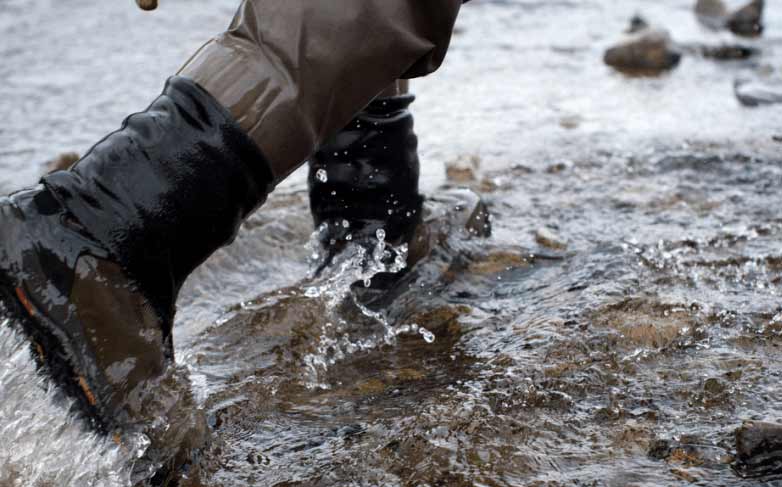
Let’s begin with the critical differences between the breathable waders and neoprene waders. The essential facts about the neoprene vs breathable waders list include:
- Thickness
- Density
- Weight
- Puncture-resistance
- Thermal features
- Versatility
- Storing
1. Thickness
First of all, let’s talk about the thickness of both types of waders. This feature is among the most prominent ones that both of them features. The neoprene type is thicker than the breathable type. Besides, this type of waders has cushions. This makes it even thicker.
On the other hand, the breathable type is significantly thinner than the neoprene one. The difference in thickness affects some other features of these two types as well, including the puncture-resistance and thermal properties.
2. Density
The neoprene waders are denser than the breathable ones. This is very logical, even if you pay attention to the nature of these two types of waders. Namely, the breathable ones are lighter and supposed to allow some breathing space, while the neoprene ones snuggly fit the user.
Is neoprene breathable? You should know that this material is not 100% air-proof, but it cannot be placed in the “breathable” material category. This is why the material itself has to be denser when it comes to the neoprene waders.
3. Weight
All breathable waders are significantly lighter than the neoprene ones. Even though this is suitable for the user, from the aspect of wearing them, walking in them, as well as carrying them, it does have some drawbacks. Namely, the breathable waders are more prone to punctures than the neoprene ones.
4. Puncture-Resistance
When it comes to the puncture resistance, you have probably noticed that we have already mentioned it several times. The breathable waders are more susceptible to punctures than the neoprene ones, as the material they are made from is not as durable as neoprene.
Moreover, they are lightweight, less dense, and thinner than the neoprene waders. These are the factors that significantly affect the durability.
5. Thermal features
Thermal features are essential for specific users, depending on their organism, preferences, as well as climate and time they usually spend in water or humid hunting zones.
Namely, the neoprene waders are very warm. Unfortunately, they are sometimes even too warm, and hunters and fishermen cannot stand the warmth created underneath these waders. On the other hand, the breathable waders are comfortable for hot climates but too cold for the cooler climates.
6. Versatility
When it comes to versatility, we can conclude that the breathable waders are more versatile than the neoprene ones for a single, simple reason – layering. Namely, you can comfortably wear several layers of clothes under the breathable waders.
Why is this important? We have already said that the breathable waders are not so thermally superior. It tends to be too cold if you wear them in cool climates. The majority of users decide to wear several layers of clothes underneath them to prevent cold water from harming them.
7. Storing
You should store the neoprene waders in an upright position or hang them. On the other hand, breathable waders are to be folded.
8. Price
Let’s talk about the budget. One thing is clear: if you are on a tight budget, you will opt for the neoprene waders. Let’s be clear and point out that there are many different types of neoprene waders and you can pay a significant amount of money for a good model. However, it is true that they are cheaper than the breathable ones.
The breathable waders can be two times more expensive than the average neoprene model. On the other hand, consider the repairs as well. The neoprene waders will need more money for repairs than the quality breathable ones you have invested in.
9. Types/Variations
There are several variations of each wader type. First of all, the neoprene types include the 3.5-mm models and the thicker, 5-mm models.
When it comes to the breathable waders, there are the insulated and uninsulated waders. The latter ones provide better thermal stability and comfort, especially in cold hunting or fishing conditions.
10. The Difference in Basic Features
Basic features of these two types are not very different. The shape is generally the same, with the difference that the neoprene ones are tighter than the breathable ones.
Moreover, these two types of waders are suitable for different climates. While the neoprene ones are the best choice if you plan your fishing trips in cold waters, the breathable ones are more suitable for warm climates. However, there are breathable waders with insulation. Therefore, if you invest a little bit more money, you can get the perfect waders for any activity.
11. Materials Explained
Now, let’s talk about the materials. Since the beginning of this article, we have been mentioning neoprene. What is neoprene? It is a particular type of thick chlorine compound rubber. This material was invented to protect the users from cold in low temperatures, including water and air.
However, do you know what happens in the hot weather? Neoprene is not so comfortable at higher temperatures. The inside tends to become too hot and sweaty. Luckily, high-quality models have a special inner layer that protects the user’s skin and makes the product more comfortable.
Breathable waders are made from special breathable fabric that is suitable for the exchange of water vapor between the interior and exterior. Moreover, this material is not too tight, and it does not squeeze the legs of the user. Therefore, it is more comfortable than neoprene.
12. The Difference in Uses
The neoprene waders are better for cold climates. Moreover, they are more puncture-resistant than the breathable ones. The material is durable, and the inner layer that comes in modern neoprene waders provides more comfort. They come in the following thicknesses:
- 5 mm
- 5 mm.
On the other hand, the breathable ones are better for warmer climates. They are also suitable for users who are used to wearing more layers of clothes under the waders. They are lightweight. They allow more comfort from the sweating point of view as well.
Conclusion
Finally, let’s say that we hope that you have learned something from our today’s comparison article focused on the pros and cons of each wader type.
Simply put, the advantages of the neoprene ones would be increased puncture resistance, stretchy nature, as well as thermal properties if you come from a cold climate. Also, let’s not underestimate the price.
On the other hand, the advantages of the breathable waders are their lightness, versatility, as well as easy repairs. They are also resistant to snagging, which makes them the favorite waders among millions of users.

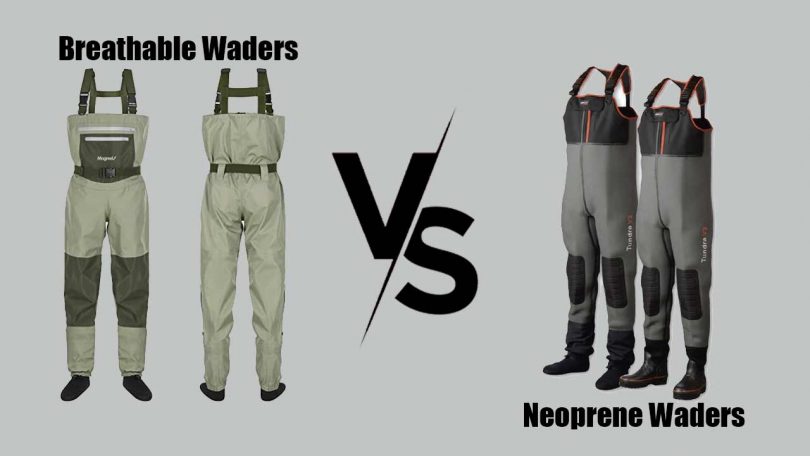
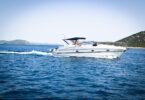

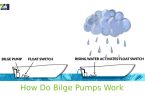
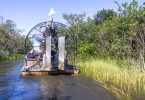
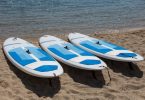

Leave a Comment